Older’s Blade Runner-inspired furniture has an agenda
Uniform designers Letizia Caramia and Morten Thuesen of Older bring their utilitarian aesthetic to furniture design, with references to cult cinema, Europe and the Italian radicals
Delfino Sisto Legnani - Photography
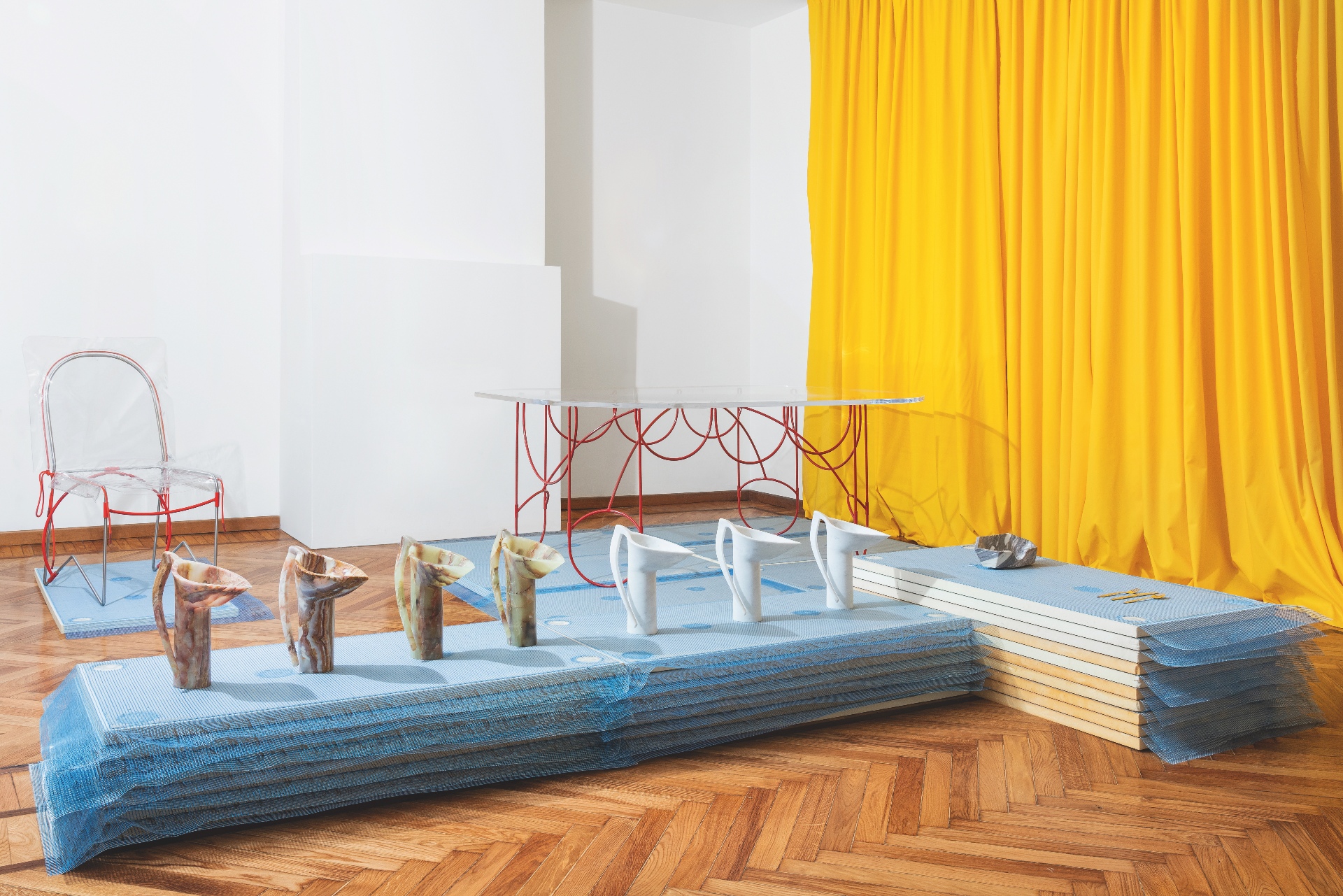
In 2013, Letizia Caramia and Morten Thuesen launched Older, a brand that would turn the concept of hospitality uniforms upside down. The pair, Italian and Danish respectively, who had met while working at Alexander McQueen in London, joined forces on the project to explore a new approach to fashion. ‘Older was born as a result of us having grown tired of a fashion system we believed lacked ideology, sustainability and the ability to make us dream,’ say the designers. ‘As we are both very interested in architecture, gastronomy and wine, we were thinking how we could merge these fields. The answer became uniforms.’
Their first commission came from Restaurant 108 in Copenhagen (part of the Noma group). More soon followed, and Older is now known across the industry for its asymmetric silhouettes, the quality of its materials, well-considered details such as fastenings and pockets, and a pragmatic approach to functionality. The pair work with a smart bio-cotton fabric they have developed themselves, and sustainability is a strong focus throughout the design and production processes.
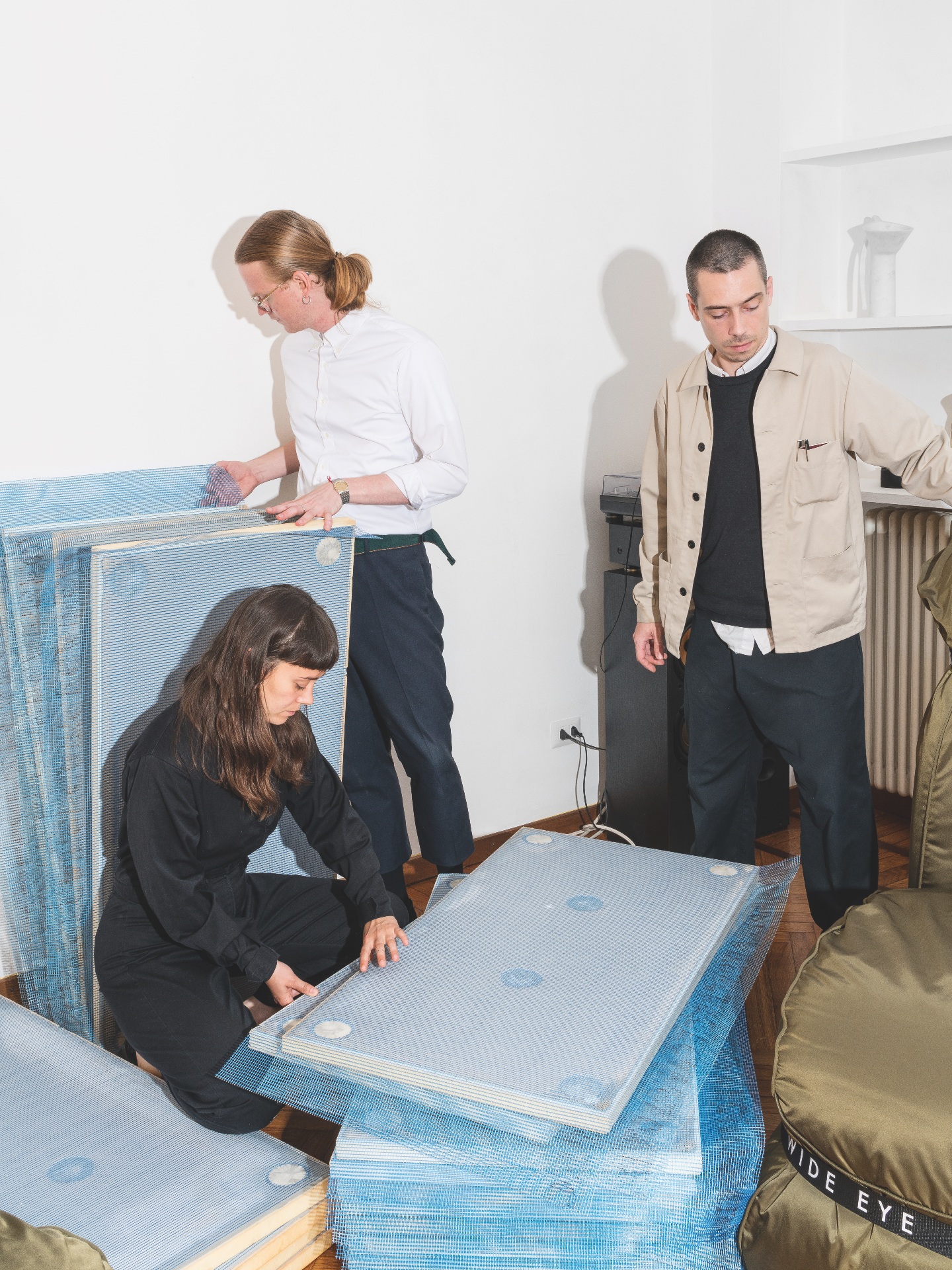
From left, Older’s Letizia Caramia and Morten Thuesen in their live-work space in Milan, with Danish artist Alexander Vinther
So far, their clients include art institutions such as Copenhagen Contemporary and Tate Modern, as well as restaurants ranging from the Snøhetta-designed Under, to Massimo Bottura’s Refettorio. For Fjordenhus in Vejle, Denmark, Olafur Eliasson’s first building project, containing offices and public exhibition space, they designed not just bespoke uniforms but ‘objects to accompany the spatial experience of the building’, including textile sculptures and specially engineered napkins that roll and fold into a neat design. They cite the project as the highlight of their journey so far and the inspiration for their next chapter. ‘Through this collaboration, we were catapulted into the idea of opening up our design universe even further,’ they say.
Caramia and Thuesen have a particular passion for the political and revolutionary approach of radicals such as Superstudio and Archizoom, the postmodern simplicity and poetry of Afra and Tobia Scarpa’s pieces, Carlo Mollino’s eclectic approach to craftsmanship, and the Gesamtkunstwerk ideas of Joe and Gianni Colombo.
These influences collide in their latest project, a debut design collection, titled Wide Eye, that includes furniture and objects created in collaboration with Danish artist Alexander Vinther. As they were developing the collection, they reached out to Milanese curator Valentina Ciuffi (whose Studio Vedèt works regularly with Nilufar and is the driving force behind the Alcova group shows in Milan, among other things) to help them present the project through an exhibition and a book. ‘What convinced me is their incredible know-how of the fashion system, with a detached approach towards the fastpaced rhythm of its industry,’ says Ciuffi, ‘and their impressive architectural culture – the way they work is strongly linked to the architecture of the place; they conceive garments as wearable architecture.’
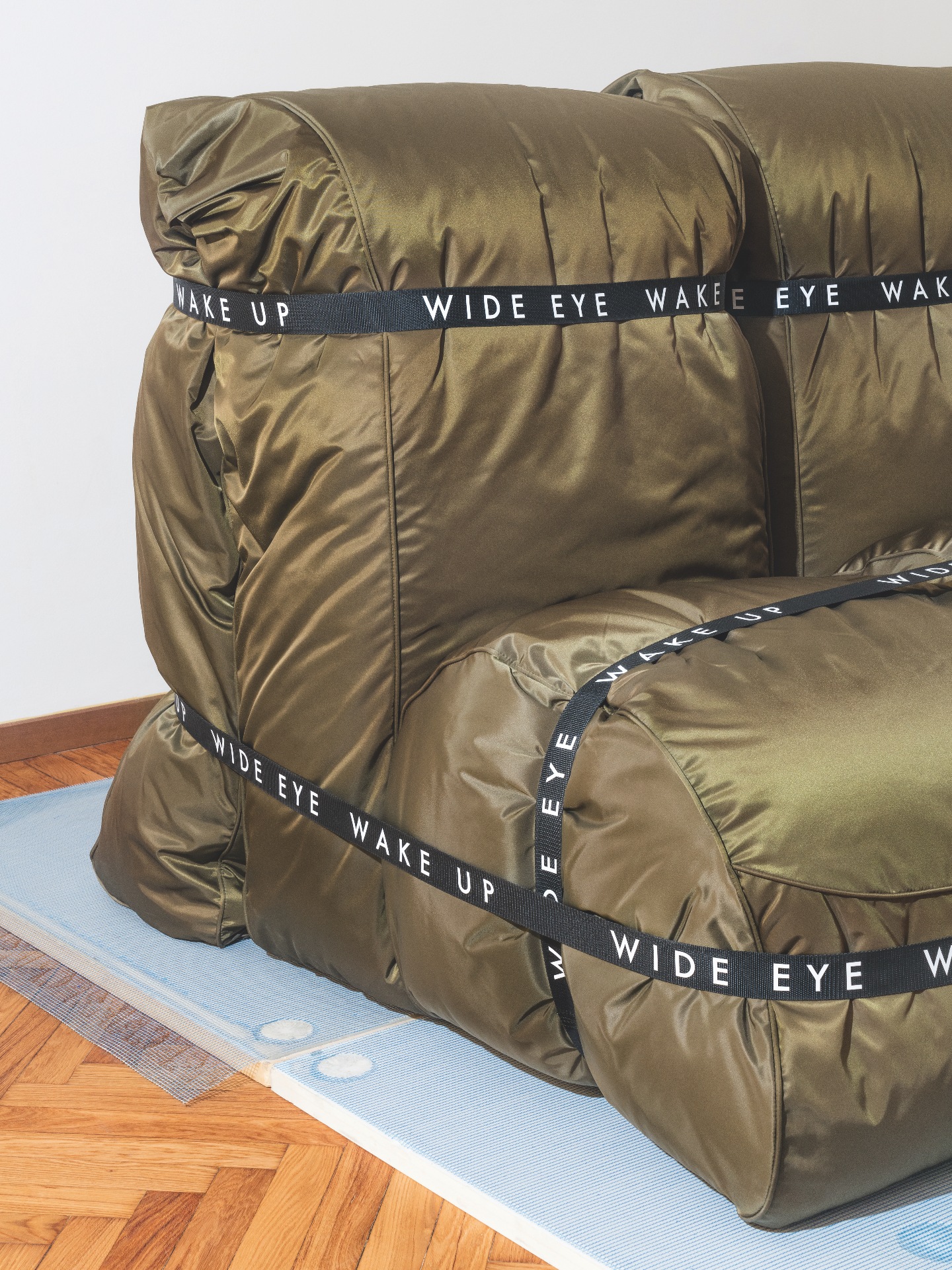
‘Wide Eye’ sofa, upholstered in green Limonta nylon, the same washable fabric used to produce Older’s uniforms
Now Caramia and Thuesen have inverted this approach, notes Ciuffi. Starting from their uniform designs, together with Vinther they have created sculptures as well as functional furniture. The human body and the way it is dressed is a factor throughout the collection: the ‘Wide Eye’ sofa, for example, is upholstered in the same textile that is used for Older’s uniforms, and the ‘Zhora’ chair wears a PVC covering inspired by a Blade Runner character. Other objects bear anatomical references, such as the discreetly phallic ‘Papi’ table.
The design duo have developed an obsession with craftsmanship. ‘All the marble artisans we work with are up-and-coming,’ they say. Tuscany-based Francesco Basini Gazzi makes all their marble pieces, while for the sofa they found a manufacturer that had previously produced Tobia Scarpa furniture.
They also recently made the move from Paris to Milan, where they live and work in a hybrid space. The apartment will serve as the backdrop for the Wide Eye collection when it is launched on 29 September, with a set designed by curator Joseph Grima featuring raw materials to let the pieces’ forms speak.
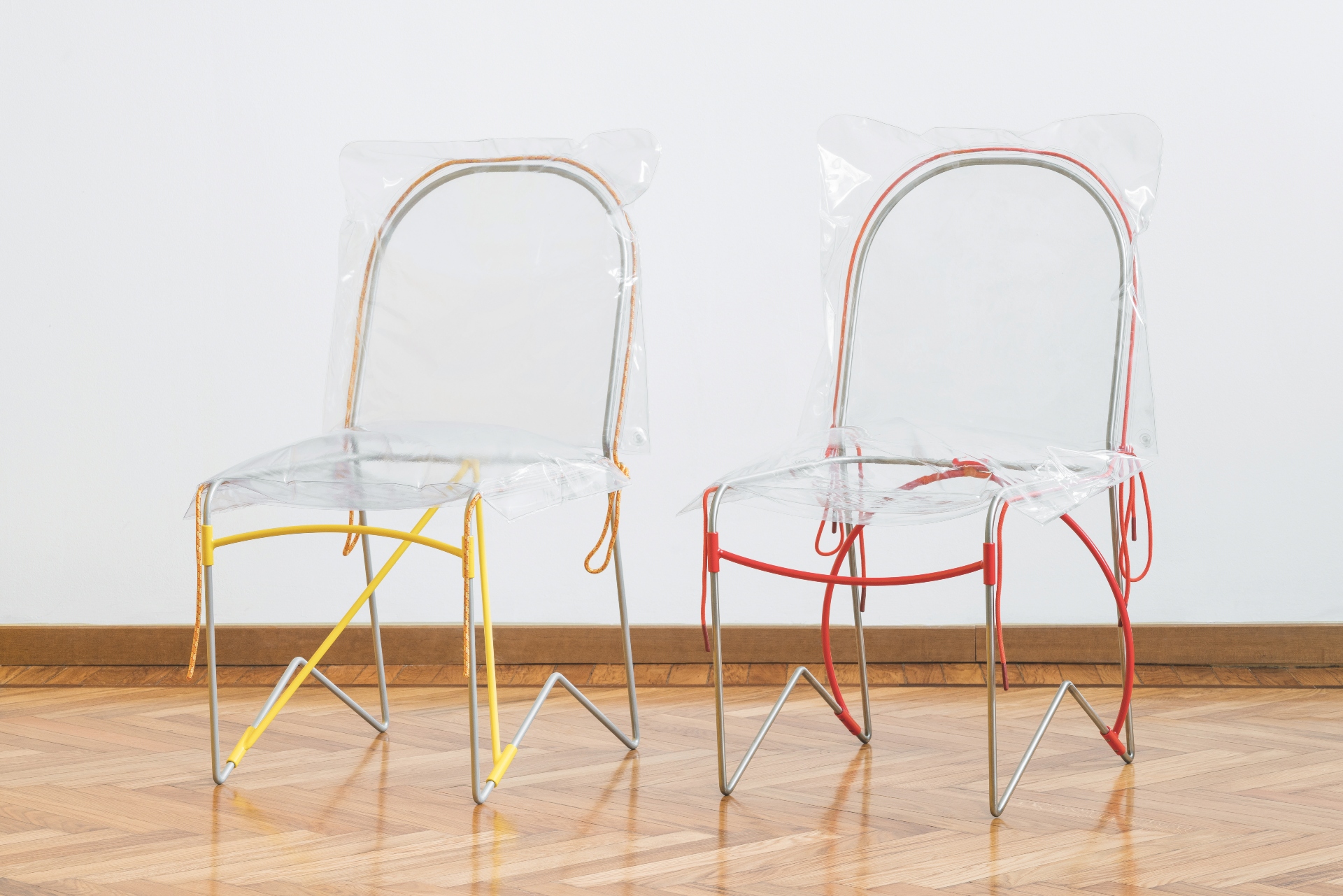
‘Zhora’ dining chairs, with steel frames and inflatable PVC upholstery
For Ciuffi, Caramia and Thuesen are a perfect representation of the young creatives who are helping shape Milan as a cultural and creative capital. But the pair also work within a distinctively European context. The collection itself is meant as a pro-European statement: its title, Wide Eye, is based on the ancient Greek etymology of the word ‘Europe’, while a nylon band that encases the sofa bears the slogan ‘Wide Eye Wake Up’, something of a mission statement. Inspired by the results of the 2019 European elections, during which many populist parties gained power, the pair ‘wanted to create furniture that had a political agenda, reclaiming a tolerant, open and united Europe’.
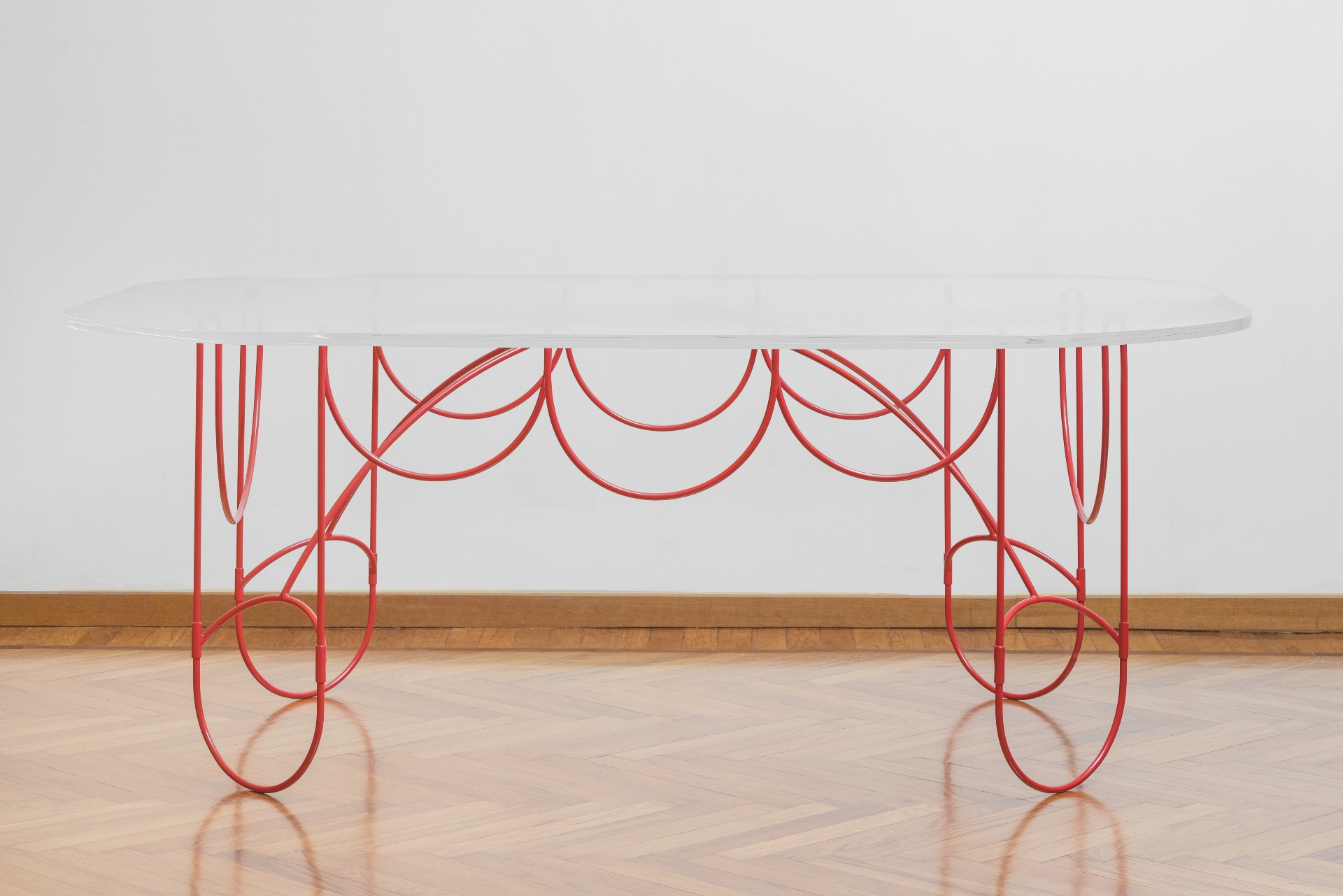
’Papi’ table with Plexiglas top supported by red powder-coated iron frame

‘Perky’ marble wall brackets, created in collaboration with Tuscany-based artisan Francesco Basini Gazzi
INFORMATION
Receive our daily digest of inspiration, escapism and design stories from around the world direct to your inbox.
Rosa Bertoli was born in Udine, Italy, and now lives in London. Since 2014, she has been the Design Editor of Wallpaper*, where she oversees design content for the print and online editions, as well as special editorial projects. Through her role at Wallpaper*, she has written extensively about all areas of design. Rosa has been speaker and moderator for various design talks and conferences including London Craft Week, Maison & Objet, The Italian Cultural Institute (London), Clippings, Zaha Hadid Design, Kartell and Frieze Art Fair. Rosa has been on judging panels for the Chart Architecture Award, the Dutch Design Awards and the DesignGuild Marks. She has written for numerous English and Italian language publications, and worked as a content and communication consultant for fashion and design brands.
-
 Europe’s auto industry regroups at the Brussels Motor Show: what’s new and notable for 2026
Europe’s auto industry regroups at the Brussels Motor Show: what’s new and notable for 20262026’s 102nd Brussels Motor Show played host to a number of new cars and concepts, catapulting this lesser-known expo into our sightlines
-
 Wallpaper* Best Use of Material 2026: Beit Bin Nouh, Saudi Arabia, by Shahira Fahmy
Wallpaper* Best Use of Material 2026: Beit Bin Nouh, Saudi Arabia, by Shahira FahmyBeit Bin Nouh by Shahira Fahmy is a captivating rebirth of a traditional mud brick home in AlUla, Saudi Arabia - which won it a place in our trio of Best Use of Material winners at the Wallpaper* Design Awards 2026
-
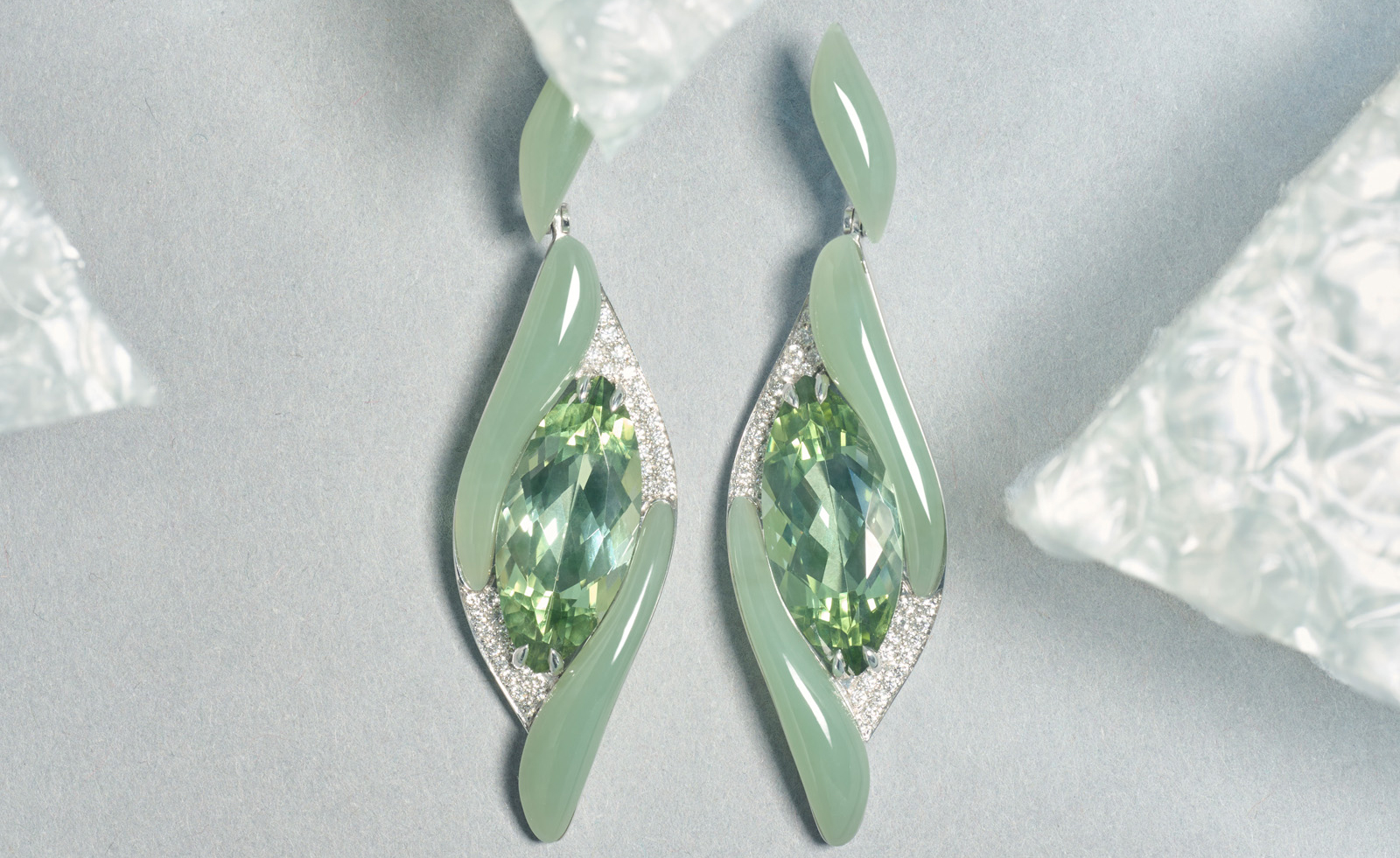 Wallpaper* Design Awards: Boghossian’s gem wizardry dazzles in high jewellery
Wallpaper* Design Awards: Boghossian’s gem wizardry dazzles in high jewelleryBoghossian's unique mix of craftsmanship and modern design is behind the edgy elegance of its jewellery – a worthy Wallpaper* Design Awards 2026 winner